Growing grapes at home might seem like a challenge reserved for seasoned vineyard owners, but I’m here to tell you it’s absolutely achievable, even in your own backyard! Forget those expensive supermarket grapes – imagine plucking juicy, sun-ripened fruit straight from your own vine. Sounds dreamy, right?
For centuries, grapes have held a special place in cultures around the world, from ancient Roman feasts to modern-day wine celebrations. The art of viticulture, or grape cultivation, has been passed down through generations, and while large-scale vineyards require specialized knowledge, the basic principles can be adapted for the home gardener.
Why should you consider growing grapes at home? Well, beyond the sheer satisfaction of harvesting your own fruit, you’ll have complete control over the growing process, ensuring your grapes are free from harmful pesticides and chemicals. Plus, it’s a fantastic way to add beauty and interest to your garden, creating a lush, green space that attracts pollinators and provides shade. In this article, I’ll share some simple yet effective DIY tricks and hacks to help you successfully cultivate grapes, no matter your experience level. Get ready to embark on a rewarding gardening adventure!
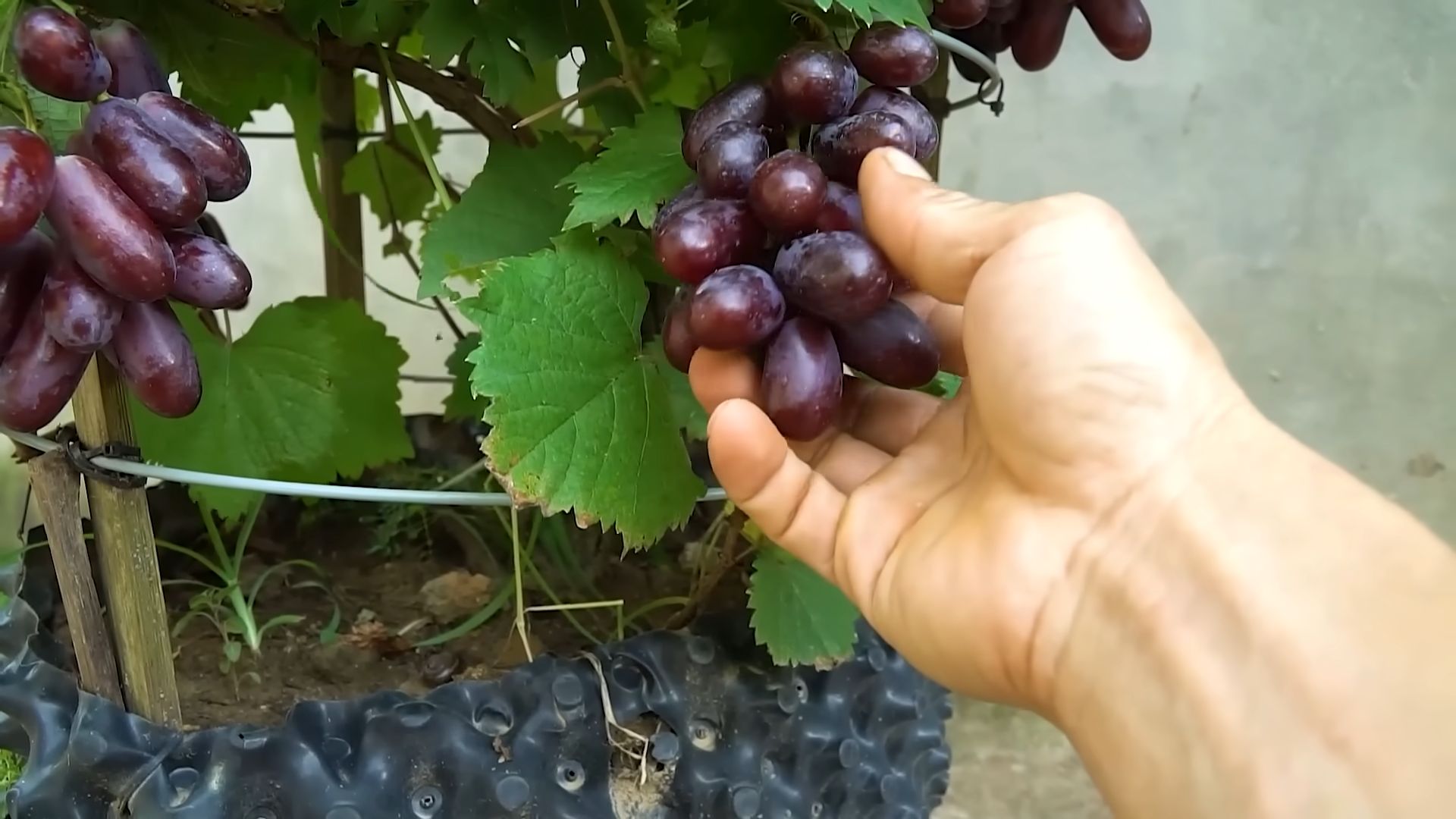
Growing Grapes at Home: A DIY Guide to Vineyard Dreams
Okay, so you want to grow grapes at home? Awesome! It might seem intimidating, but trust me, with a little planning and effort, you can be enjoying your own homegrown grapes before you know it. I’m going to walk you through everything you need to know, from choosing the right variety to harvesting your delicious bounty. Let’s get started!
Choosing the Right Grape Variety
This is arguably the most important step. You can’t just plant any grape and expect it to thrive. You need to consider your climate, soil conditions, and what you plan to do with the grapes (eating, winemaking, juice, etc.).
* Climate is Key: Different grape varieties have different cold hardiness and heat tolerance. Research varieties that are known to thrive in your USDA plant hardiness zone. For example, if you live in a colder climate, you’ll want to look for varieties like ‘Marquette’ or ‘Frontenac’. If you’re in a warmer region, ‘Thompson Seedless’ or ‘Muscadine’ might be better choices.
* Soil Matters: Grapes generally prefer well-drained soil with a slightly acidic to neutral pH (around 6.0-7.0). If your soil is heavy clay, you’ll need to amend it with organic matter to improve drainage.
* Purpose Driven: Are you dreaming of making your own wine? Then you’ll need wine grape varieties like ‘Cabernet Sauvignon’, ‘Chardonnay’, or ‘Riesling’. If you just want table grapes for snacking, ‘Thompson Seedless’, ‘Concord’, or ‘Moon Drops’ are great options. For juice, ‘Concord’ is a classic choice.
* Disease Resistance: Some grape varieties are more resistant to common diseases like powdery mildew and black rot. Choosing disease-resistant varieties can save you a lot of headaches (and fungicide applications) down the road. Look for varieties labeled as “disease-resistant” or “disease-tolerant.”
* Consider Seedless vs. Seeded: Seedless grapes are obviously more convenient for eating, but some people find that seeded grapes have a richer flavor. It’s a matter of personal preference.
Preparing Your Vineyard Site
Grapes need plenty of sunlight and good air circulation to thrive. Choosing the right location is crucial.
* Sunlight is Essential: Grapes need at least 6-8 hours of direct sunlight per day. Choose a location that gets plenty of sun, especially in the morning.
* Good Air Circulation: Proper air circulation helps to prevent fungal diseases. Avoid planting grapes in low-lying areas where air can stagnate. A gentle slope is ideal.
* Soil Testing: Before you plant, it’s a good idea to get your soil tested. This will tell you the pH level and nutrient content of your soil. You can usually get your soil tested through your local agricultural extension office.
* Soil Amendment: Based on your soil test results, you may need to amend your soil. If your soil is too acidic, you can add lime to raise the pH. If it’s too alkaline, you can add sulfur to lower the pH. You should also add plenty of organic matter, such as compost or well-rotted manure, to improve drainage and fertility.
* Weed Control: Get rid of any weeds in the planting area. Weeds compete with grapevines for water and nutrients. You can use herbicides, but I prefer to use a combination of hand-weeding and mulching.
Planting Your Grapevines
Now for the fun part! Planting your grapevines is a rewarding experience.
1. Timing is Important: The best time to plant grapevines is in early spring, after the last frost. You can also plant them in the fall, but make sure to give them enough time to establish roots before winter.
2. Dig the Holes: Dig holes that are large enough to accommodate the root systems of your grapevines. The holes should be about twice as wide as the root ball and just as deep.
3. Prepare the Roots: Gently remove the grapevines from their containers. If the roots are circling around the pot, gently loosen them up with your fingers. You can also trim any damaged or overly long roots.
4. Planting Depth: Place the grapevines in the holes, making sure that the top of the root ball is level with the ground.
5. Backfill the Holes: Backfill the holes with the amended soil, gently tamping it down around the roots.
6. Water Thoroughly: Water the grapevines thoroughly after planting. This will help to settle the soil and get the roots off to a good start.
7. Mulch: Apply a layer of mulch around the base of the grapevines. Mulch helps to retain moisture, suppress weeds, and regulate soil temperature. I like to use wood chips or straw.
Training and Pruning Your Grapevines
Training and pruning are essential for producing high-quality grapes. It might seem complicated at first, but once you get the hang of it, it’s not too bad.
* The Importance of Training: Training refers to the way you shape and support your grapevines. Proper training helps to maximize sunlight exposure, improve air circulation, and make harvesting easier.
* The Importance of Pruning: Pruning is the removal of unwanted shoots, leaves, and canes. Pruning helps to control the size and shape of the grapevine, improve fruit quality, and prevent disease.
* Choosing a Training System: There are several different training systems for grapevines. The most common systems are the cordon system and the cane system. The cordon system is more suitable for warmer climates, while the cane system is better for colder climates. I recommend researching both and choosing the system that best suits your needs and climate.
* First Year Training: During the first year, your goal is to establish a strong trunk. Choose the strongest shoot and train it to grow vertically. Remove any other shoots that emerge from the base of the plant.
* Subsequent Years: In subsequent years, you’ll continue to train and prune your grapevines according to the training system you’ve chosen. Pruning is typically done in late winter or early spring, before the buds begin to swell.
Watering and Fertilizing
Grapes need consistent watering and fertilization to thrive.
* Watering: Water your grapevines regularly, especially during dry periods. Young grapevines need more frequent watering than established vines. Aim to keep the soil consistently moist, but not waterlogged.
* Fertilizing: Fertilize your grapevines in the spring, before the buds begin to swell. Use a balanced fertilizer that contains nitrogen, phosphorus, and potassium. You can also add compost or well-rotted manure to the soil. Avoid over-fertilizing, as this can lead to excessive vegetative growth and reduced fruit production.
* Monitor Soil Moisture: Use a soil moisture meter or simply stick your finger into the soil to check the moisture level. Adjust your watering schedule accordingly.
Pest and Disease Control
Grapes can be susceptible to various pests and diseases.
* Common Pests: Some common grape pests include aphids, Japanese beetles, and grape phylloxera.
* Common Diseases: Common grape diseases include powdery mildew, downy mildew, black rot, and Botrytis bunch rot.
* Prevention is Key: The best way to control pests and diseases is to prevent them from occurring in the first place. Choose disease-resistant varieties, provide good air circulation, and keep your vineyard clean.
* Organic Control Methods: If you prefer to use organic control methods, you can try using insecticidal soap, neem oil, or copper-based fungicides.
* Chemical Control Methods: If organic methods are not effective, you may need to use chemical pesticides or fungicides. Always follow the instructions on the label carefully.
* Regular Monitoring: Regularly inspect your grapevines for signs of pests or diseases. The earlier you catch a problem, the easier it will be to control.
Harvesting Your Grapes
Finally, the moment you’ve been waiting for! Harvesting your grapes is the culmination of all your hard work.
1. Ripeness Indicators: The best way to determine when your grapes are ripe is to taste them. Ripe grapes will be sweet and juicy, with a good balance of acidity. You can also check the sugar content of the grapes using a refractometer.
2. Harvesting Time: Harvest your grapes when they are fully ripe. The exact timing will depend on the variety of grape and the weather conditions.
3. Gentle Handling: Handle the grapes gently to avoid bruising them. Use sharp scissors or pruning shears to cut the grape clusters from the vine.
4. Storage: Store your harvested grapes in a cool, dry place. They will keep for several days in the refrigerator.
Enjoying Your Homegrown Grapes
Now that you’ve harvested your grapes, it’s time to enjoy them! You
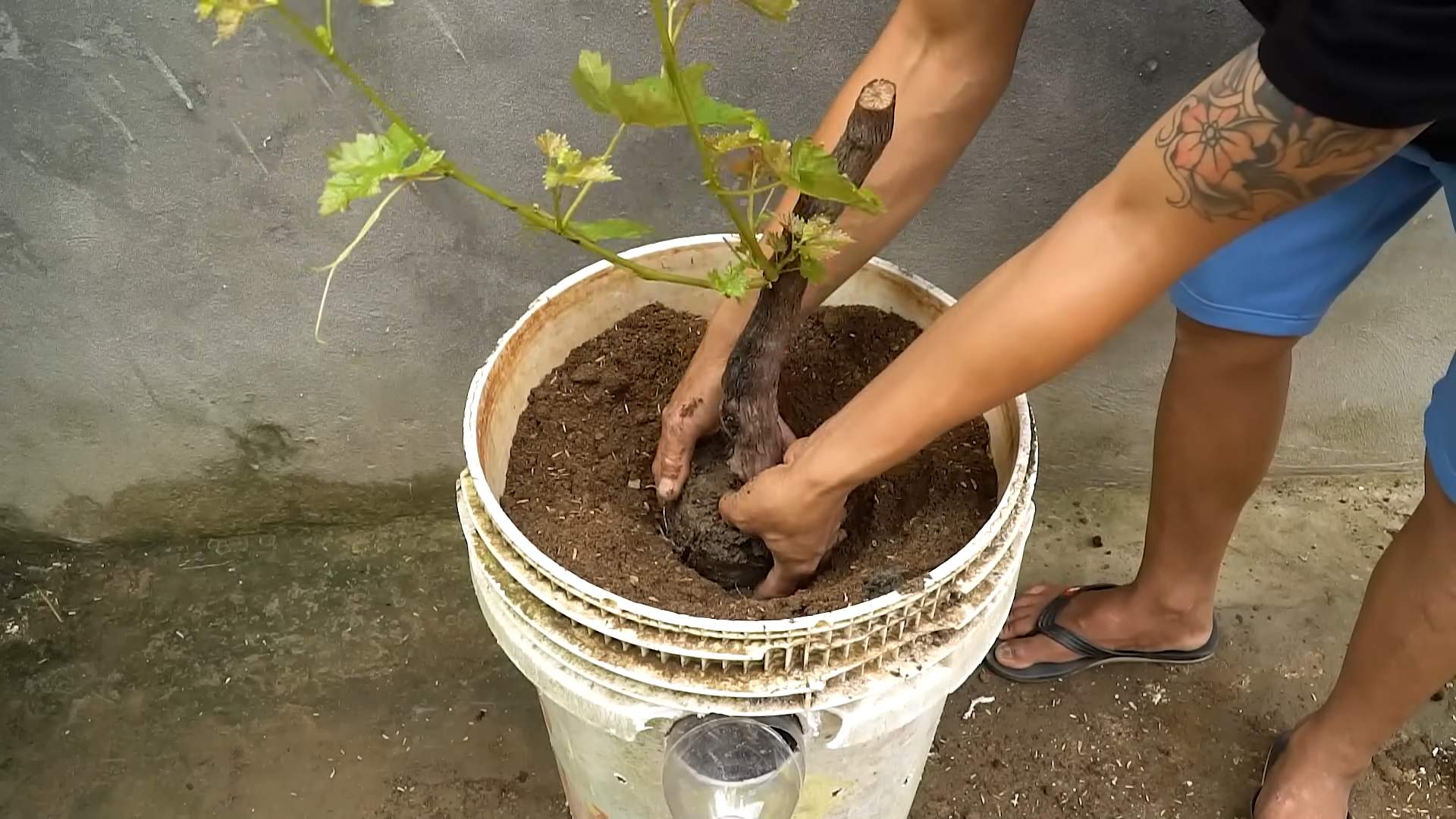
Conclusion
So, there you have it! Growing grapes at home might seem daunting at first, but with a little patience, the right knowledge, and this simple DIY trick, you can transform your backyard into a miniature vineyard. We’ve walked you through the process, highlighting the key steps to ensure your success. This isn’t just about saving money; it’s about connecting with nature, understanding the journey of your food, and enjoying the unparalleled satisfaction of harvesting your own delicious grapes.
This DIY approach to grape cultivation offers a unique opportunity to tailor the process to your specific environment and preferences. Imagine the joy of plucking sun-ripened grapes straight from the vine, knowing you nurtured them from the very beginning. The taste is simply unmatched by anything you can buy in a store. The freshness, the sweetness, the subtle nuances of flavor – it’s an experience that will elevate your appreciation for this incredible fruit.
But the benefits extend beyond just the taste. Growing your own grapes is a sustainable practice that reduces your carbon footprint. You’re eliminating the need for transportation, packaging, and the often-intensive farming practices associated with commercial grape production. Plus, you’ll have a beautiful, thriving plant that adds aesthetic value to your property.
Don’t be afraid to experiment! Once you’ve mastered the basics, you can explore different grape varieties to find your favorites. Consider growing seedless grapes for easy snacking, or try your hand at cultivating wine grapes for a truly rewarding challenge. You can also experiment with different trellising methods to create a visually stunning display. Perhaps a pergola draped in lush grapevines, or a simple wire system that maximizes sunlight exposure.
Remember, the key to success is consistent care and attention. Regularly check your vines for pests and diseases, provide adequate water and nutrients, and prune them properly to encourage healthy growth and abundant fruit production.
We are confident that you can successfully grow grapes at home using this method. It’s a rewarding experience that will bring you years of enjoyment. So, gather your supplies, choose your grape variety, and get started today! We encourage you to document your journey, share your successes (and challenges!), and inspire others to embark on this exciting adventure. Share your photos and stories with us in the comments below. We can’t wait to see your homegrown grapes! Let’s cultivate a community of home grape growers and spread the joy of this delicious and rewarding fruit. This DIY project is more than just a gardening task; it’s a step towards a more sustainable and fulfilling lifestyle.
Frequently Asked Questions (FAQ)
What type of grapes are easiest to grow for beginners?
For beginners, varieties like Concord, Thompson Seedless, and Reliance are excellent choices. Concord grapes are known for their hardiness and disease resistance, making them relatively low-maintenance. Thompson Seedless is a popular table grape that’s also easy to grow, and Reliance is a cold-hardy seedless variety that’s well-suited for colder climates. These grapes are generally more forgiving of beginner mistakes and will provide a good starting point for your grape-growing journey. Consider your local climate and soil conditions when making your selection. Local nurseries can provide valuable advice on the best varieties for your specific area.
How much space do I need to grow grapes?
Grapevines need ample space to thrive. A single grapevine typically requires at least 8-10 feet of space between plants in a row, and rows should be spaced 10-12 feet apart. This allows for adequate sunlight penetration and air circulation, which are crucial for healthy growth and fruit production. If you’re limited on space, consider growing grapes on a trellis or arbor to maximize vertical space. Dwarf or miniature grape varieties are also available, but they may not produce as much fruit as standard varieties. Before planting, carefully consider the mature size of your chosen grape variety and ensure you have enough space to accommodate its growth.
How often should I water my grapevines?
Watering frequency depends on several factors, including climate, soil type, and the age of the vine. Young grapevines need more frequent watering than established vines. In general, water deeply and less frequently, allowing the soil to dry out slightly between waterings. During hot, dry periods, you may need to water more often. Avoid overwatering, as this can lead to root rot. A good rule of thumb is to water when the top inch of soil feels dry to the touch. Mulching around the base of the vine can help retain moisture and reduce the need for frequent watering.
What kind of fertilizer should I use for my grapevines?
Grapevines benefit from regular fertilization, but it’s important to use the right type of fertilizer and apply it at the appropriate time. A balanced fertilizer with a ratio of 10-10-10 (nitrogen, phosphorus, potassium) is a good starting point. Apply fertilizer in early spring, before the vines begin to actively grow. Avoid over-fertilizing, as this can lead to excessive vegetative growth at the expense of fruit production. Soil testing can help you determine the specific nutrient needs of your soil and guide your fertilizer choices. Organic fertilizers, such as compost and manure, are also excellent options for providing nutrients to your grapevines.
How do I protect my grapes from pests and diseases?
Protecting your grapes from pests and diseases is essential for a successful harvest. Common grape pests include aphids, Japanese beetles, and grape phylloxera. Diseases such as powdery mildew, downy mildew, and black rot can also affect grapevines. Regular monitoring of your vines is crucial for early detection of problems. Encourage beneficial insects, such as ladybugs and lacewings, to control pests naturally. Prune your vines properly to improve air circulation and reduce humidity, which can help prevent fungal diseases. If necessary, use organic pesticides and fungicides to control pests and diseases. Choose products that are specifically labeled for use on grapes and follow the instructions carefully.
When is the best time to harvest my grapes?
Determining the optimal time to harvest grapes is crucial for achieving the best flavor and quality. The best indicator of ripeness is taste. Sample a few grapes from different parts of the vine. They should be sweet and juicy, with a pleasant flavor. Other indicators of ripeness include the color of the grapes, the ease with which they detach from the vine, and the sugar content (measured using a refractometer). The specific harvest time will vary depending on the grape variety and your local climate. Generally, grapes are ready to harvest in late summer or early fall.
Can I grow grapes in containers?
Yes, you can grow grapes in containers, but it requires careful planning and attention. Choose a large container (at least 20 gallons) with good drainage. Select a dwarf or miniature grape variety that is well-suited for container growing. Use a high-quality potting mix that is well-draining and provides adequate nutrients. Water regularly and fertilize as needed. Container-grown grapes may need to be protected from extreme temperatures during the winter.
What kind of trellis should I use for my grapevines?
The type of trellis you choose will depend on the grape variety, the available space, and your personal preferences. Common trellising methods include wire trellises, arbors, and pergolas. A simple wire trellis consists of horizontal wires strung between posts. Arbors and pergolas provide a more decorative and shaded structure for growing grapes. Choose a trellis that is strong enough to support the weight of the mature vines and fruit. Ensure that the trellis is properly anchored to the ground to prevent it from tipping over in strong winds.
How do I prune my grapevines?
Pruning is essential for maintaining the health and productivity of your grapevines. Pruning removes dead, damaged, and diseased wood, improves air circulation, and encourages fruit production. The best time to prune grapes is in late winter or early spring, before the vines begin to actively grow. The specific pruning method will depend on the grape variety and the trellising system you are using. Consult a local expert or refer to a pruning guide for specific instructions.

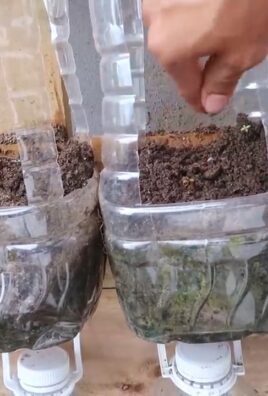
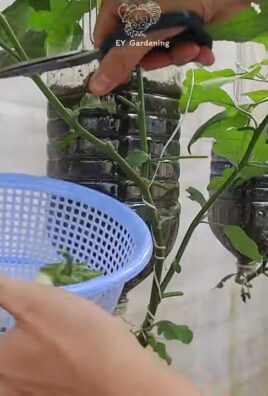
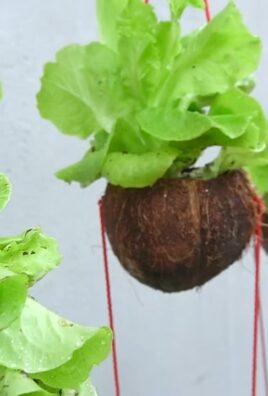
Leave a Comment